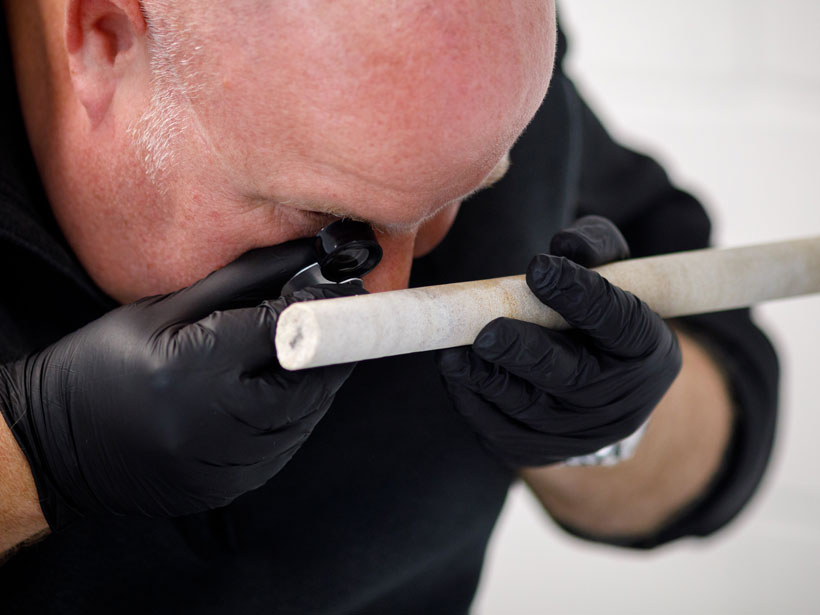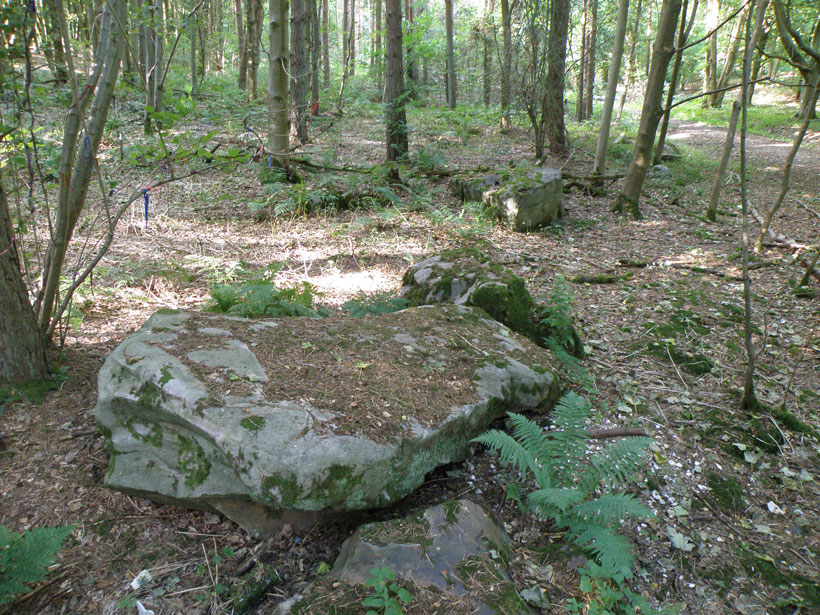A translation of this article was made possible by a partnership with Planeteando. Una traducción de este artículo fue posible gracias a una asociación con Planeteando.
Stonehenge is an iconic monument that has withstood the tests of time.
Its main architecture is composed of sarsen stones, gray megaliths towering more than 6 meters tall and weighing 18 metric tons. Despite their prominence, little is known about the 52 stones that remain of the roughly 80 that were erected during the middle–third millennium BCE.
“What’s exciting about the new study is that they have…attacked Stonehenge, as it were, with all this [new technology].”
But now, new technology and an unexpected stroke of luck have allowed researchers to analyze a puzzle at the heart of the site: What are these stones made of? Published in PLOS One, the study provides a comprehensive characterization of the physical and chemical makeup of Stonehenge’s sarsens.
“What’s exciting about the new study is that [researchers] have…attacked Stonehenge, as it were, with all this [new technology],” said Mike Pitts, an archaeologist and journalist who led excavations at the site in 1979 and 1980. “And they’re able to extract information at a really, really fine level in a way that was impossible until quite recently.”
Stone Surfaces and Serendipity
David Nash, a physical geographer at the University of Brighton in the United Kingdom, led the study. His team began by analyzing the surface of each sarsen over multiple night shifts and one “very early morning shift” when tourists were not around.
Using a portable X-ray fluorescence spectrometer (“it looks like a big sci-fi ray gun,” Nash said), the researchers took five measurements from each of the 52 stones, making sure to hold perfectly still for 2 minutes each time. The team stood in the dark, cold night with headlamps, trying to find patches of stone without lichen cover. Save for a few security guards, there was nobody else around, Nash said. “So, yeah, it’s a bit creepy.”
The team’s measurements, careful though they might have been, could go only so deep. They could not provide information about what lies beneath the surface. And because Stonehenge is so protected by the government, they could not take any samples of the stones’ interiors.
But then serendipity struck: As his team was wrapping up the fieldwork at Stonehenge, Nash received an email from the English Heritage Trust, the nonprofit organization that manages Stonehenge and hundreds of other historic sites in Britain.
“They emailed me and said, ‘We understand that you’re doing work on the chemistry of the stones at the moment. Could you give us a ring?’” Nash said. “My immediate reaction was, ‘Oh, God, what have we done wrong?’”
English Heritage shared information about the massive 1958 restoration project at Stonehenge. The project reerected three stones at the site, including Stone 58, a large upright sarsen that had toppled in 1797. To reinforce a fissure, three cores were drilled through Stone 58 to install metal rods.

One core was gifted to Robert Phillips, a worker at the drilling company involved in the project. (Part of a second core was later uncovered at nearby Salisbury Museum in a box labeled “Treasure Box.” The location of the third core is still unknown.) Phillips hung the core in a protective tube in his office until his retirement, and kept it through his subsequent moves to New York, Illinois, California, and, finally, Florida. As Phillips approached 90, he sought to return this important artifact and had it delivered to English Heritage in 2018.
Phillips’s Stone 58 core, whose existence was previously unknown to any of the researchers, was lent to Nash’s team, which was able to sample and examine it in detail.
“It’s the first time that we’ve been able to look inside one of the stones at Stonehenge,” Nash said.
“They just did everything imaginable with it,” said Pitts, who was not involved in the study. “I mean, it has to be the most analyzed piece of rock on Earth.”
Remarkably Pure and Incredibly Durable
Scrutinizing the cores with state-of-the-art petrographic, mineralogical, and geochemical techniques revealed a reason why the long-standing sarsen stones at Stonehenge may be so enduring.
The core was 99.7% silica—almost entirely quartz, through-and-through, which was more pure than any sarsen stone Nash had worked on. Under the microscope, its sand-sized quartz grains were tightly packed together and supporting each other. The grains were then coated in an overgrowth cement—at least 16 different growth layers that could be counted almost like tree rings—which produced an “interlocking mosaic of quartz crystals that bind the stone together,” Nash said.

“That’s probably why the sarsens were so big and have been so durable,” Nash said. “Because it’s an incredibly well cemented stone.”
The research also indicated that the dull gray Stonehenge we see today is probably not what it looked like when it was first built.
“When the stones were originally raised, they were dressed, they were cleaned up on the outside,” Nash said. “The fresh rock would have looked a creamy white color, and it must have been amazing.”
Data about Stone 58 can be applied to most of the other sarsens and to where they originated: In a 2020 paper published in Science Advances, Nash and his colleagues found that Stone 58 is geochemically similar to and representative of 50 of the remaining 52 sarsens at Stonehenge. These sarsens share geochemical signatures with sarsens in West Woods in Wiltshire, about 25 kilometers north of Stonehenge—the stones’ most probable source.

The new study also lays the groundwork for future research by making all the data open-access.
“We were basically being given access to an absolutely unique sample that was of national importance,” Nash said. “And what we wanted to make sure we did was analyze it using every single modern technique that we could, with the view being that for future studies of Stonehenge, if other people are doing more work…there was a big suite of data that people could use.”
“Having access to this stone, you realize that you’re really privileged to be able to do this work,” he added. “So you want to do it right because you can’t go back.”
—Richard J. Sima (@richardsima), Science Writer
This news article is included in our ENGAGE resource for educators seeking science news for their classroom lessons. Browse all ENGAGE articles, and share with your fellow educators how you integrated the article into an activity in the comments section below.
Citation:
Sima, R. J. (2021), State-of-the-art technology, serendipity, and secrets of Stonehenge, Eos, 102, https://doi.org/10.1029/2021EO162951. Published on 08 September 2021.
Text © 2021. The authors. CC BY-NC-ND 3.0
Except where otherwise noted, images are subject to copyright. Any reuse without express permission from the copyright owner is prohibited.


